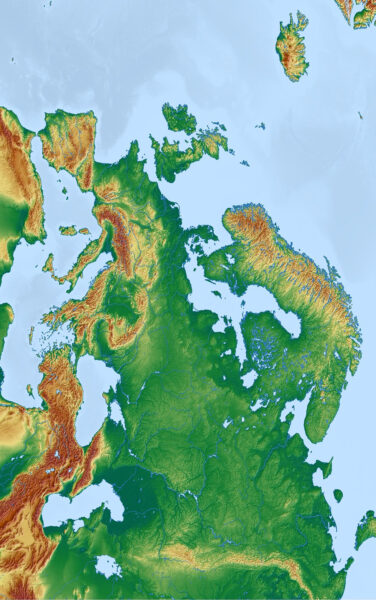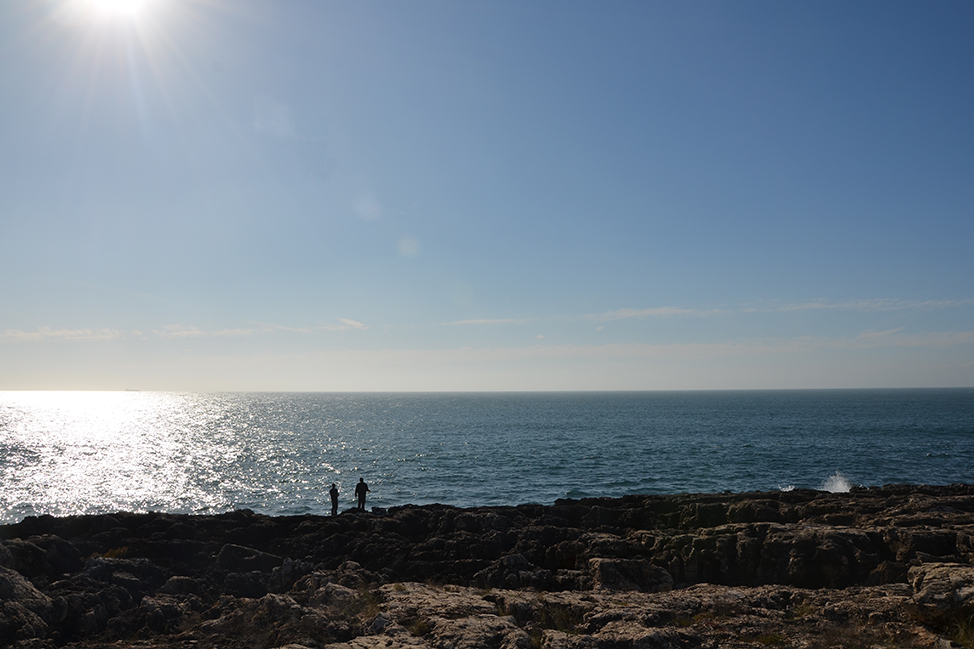Turning the map of Europe upside down, we see a peculiar peninsula on either side surrounded by the Black Sea, the Mediterranean and the Baltic, from where it struts into the Atlantic Ocean as an angry dragon.

In a geopolitical sense, Europe was and is a peculiar appendix. Turning a physical map of the Northern hemisphere upside down, we cannot fail to see the peculiar promontory which Europe constitutes. As a mushrooming appendix, it crowns Eurasia, the largest continental landmass on earth. Traditionally and for historical reasons, we are used to considering Europe a continent. Nonetheless, this is, at best, an approximation fabricating the idea that Europe is something apart. Moreover, we lose the ability to see its basic geographical properties, which form a genuinely watery seascape.
To the South, surrounded by the Caspian, the Black Sea and the Mediterranean and to the North, The Baltic, the North and the Norwegian Seas, Europe sort of falls into the Atlantic Ocean. Finis terrae west of Lisboa is often considered the westernmost outcrop. However, similar places are located up and down the western coastline, such as the cliff called Finisterra west of Santiago de Compostela, where pilgrims throw their walking sticks into the foaming seas at the exact spot where some believe the remains of St. James landed in his coffin on his rudderless boat. Alternatively, we may point to Land’s End pushing into the Cornwallis Sea from Penwith or the cliffs at Dingle Bay in Ireland. All of these places are truly awe-inspiring. Yet, when we stand on these high cliffs, we are aware of a despairing feeling: we have nowhere further to run. At least, it must have felt like that for some of those wandering people in the Early Middle Ages, who were constantly on the lookout for a place to forge a better future than that offered as slaves to the constant influx of people pulsating through the great steppes of the Eurasian hinterland stretching from China to the Hungarian Plains.
We know from the study of historical languages that on these rocky coasts or marshy islets in the tidal wetlands, the olden people sought refuge – Norse, Frisian, British, Gaelic, Breton, Basque and Galician languages formerly spoken widely, came to be preserved as smaller or larger linguistic pockets in these landscapes bordering the Atlantic Seascapes. Here, they are still revered and (occasionally) spoken. One of these languages – Norse – even became the official language in Scandinavia when “cut” off from its common proto-Germanic roots.
Land relief in Europe shows great variation within relatively small areas. To the south hilly uplands coalesce with more mountainous landscapes which move upwards into the Apennines, the Pyrenees, and the Carpathians, circling the Alps to enter the broad, lower-lying northern plains and the fertile belt of loess. An arc of hilly and mountainous uplands also exists along the north-western seaboard, beginning in southwestern Ireland, continuing through Scotland, and up along the fjord-cut spine of Norway and Sweden.
However, each region or territory contains their own complex features with reliefs, plateaus, and river valleys petering out into deltas bordered by tidal shores and marshy fenlands. In general, the geology of Europe is multifarious and complex and exhibits a wide variety of vistas, from the volcanic landscape of Iceland to the deep Russian forests, the rolling plains of Hungary and the river delta of the Danube feeding the Black Sea.
One of the enduring and distinctive qualities of the different European people was their seafaring traditions and seaworthy capabilities. Evolved through centuries, they went by water on rivers, hugging coastlines or sailing out to conquer their neighbours. Forests and mountains would block and create borders, while water would unite.
Historically, this complex and constantly shifting physio-geographical landscape fostered a multivariate background for numerous people staking out a life and a living which eventually would be different from that of their neighbours in the next valley.
The history of Europe is the history of this nearly unfathomable diversity.
